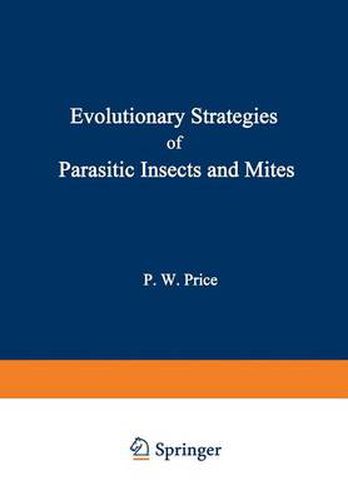Readings Newsletter
Become a Readings Member to make your shopping experience even easier.
Sign in or sign up for free!
You’re not far away from qualifying for FREE standard shipping within Australia
You’ve qualified for FREE standard shipping within Australia
The cart is loading…






This title is printed to order. This book may have been self-published. If so, we cannot guarantee the quality of the content. In the main most books will have gone through the editing process however some may not. We therefore suggest that you be aware of this before ordering this book. If in doubt check either the author or publisher’s details as we are unable to accept any returns unless they are faulty. Please contact us if you have any questions.
This volume contains the invited lectures presented in a symposium entitled Evolutionary strategies of parasitic insects and mites at the national meeting of the Entomological Society of America in Minneapolis, Minnesota, 2-5 December, 1974. The intent was to bring together biologists who have worked on arthropods that are either plant or animal parasites in order to foster consideration of general aspects of the parasitic way of life. There seems to be a deficiency of ecological and evolutionary concepts relating to parasitism, in contrast to the burgeoning literature on predation, and it appeared that an amalgamation of studies on plant and animal parasites might help development of some generalities. Since parasities are far more numerous than predators in the world fauna, or in any particular community, emphasis on their study is justified. I freely admit that para sitoids have been usefully regarded as predators by ecologists, and many concepts on predation have been derived from their study. Also, in whichever category one places the parasitoids, that is the one which contains the most species. However, from an evolu tionary point of view they show many characteristics that must be regarded as those of a parasite. Notably, they are small, highly specific to their host, highly coevolved with it, as a result many species can coexist, and their adaptive radiation has produced the majority of the species diversity seen on Earth today.
$9.00 standard shipping within Australia
FREE standard shipping within Australia for orders over $100.00
Express & International shipping calculated at checkout
This title is printed to order. This book may have been self-published. If so, we cannot guarantee the quality of the content. In the main most books will have gone through the editing process however some may not. We therefore suggest that you be aware of this before ordering this book. If in doubt check either the author or publisher’s details as we are unable to accept any returns unless they are faulty. Please contact us if you have any questions.
This volume contains the invited lectures presented in a symposium entitled Evolutionary strategies of parasitic insects and mites at the national meeting of the Entomological Society of America in Minneapolis, Minnesota, 2-5 December, 1974. The intent was to bring together biologists who have worked on arthropods that are either plant or animal parasites in order to foster consideration of general aspects of the parasitic way of life. There seems to be a deficiency of ecological and evolutionary concepts relating to parasitism, in contrast to the burgeoning literature on predation, and it appeared that an amalgamation of studies on plant and animal parasites might help development of some generalities. Since parasities are far more numerous than predators in the world fauna, or in any particular community, emphasis on their study is justified. I freely admit that para sitoids have been usefully regarded as predators by ecologists, and many concepts on predation have been derived from their study. Also, in whichever category one places the parasitoids, that is the one which contains the most species. However, from an evolu tionary point of view they show many characteristics that must be regarded as those of a parasite. Notably, they are small, highly specific to their host, highly coevolved with it, as a result many species can coexist, and their adaptive radiation has produced the majority of the species diversity seen on Earth today.